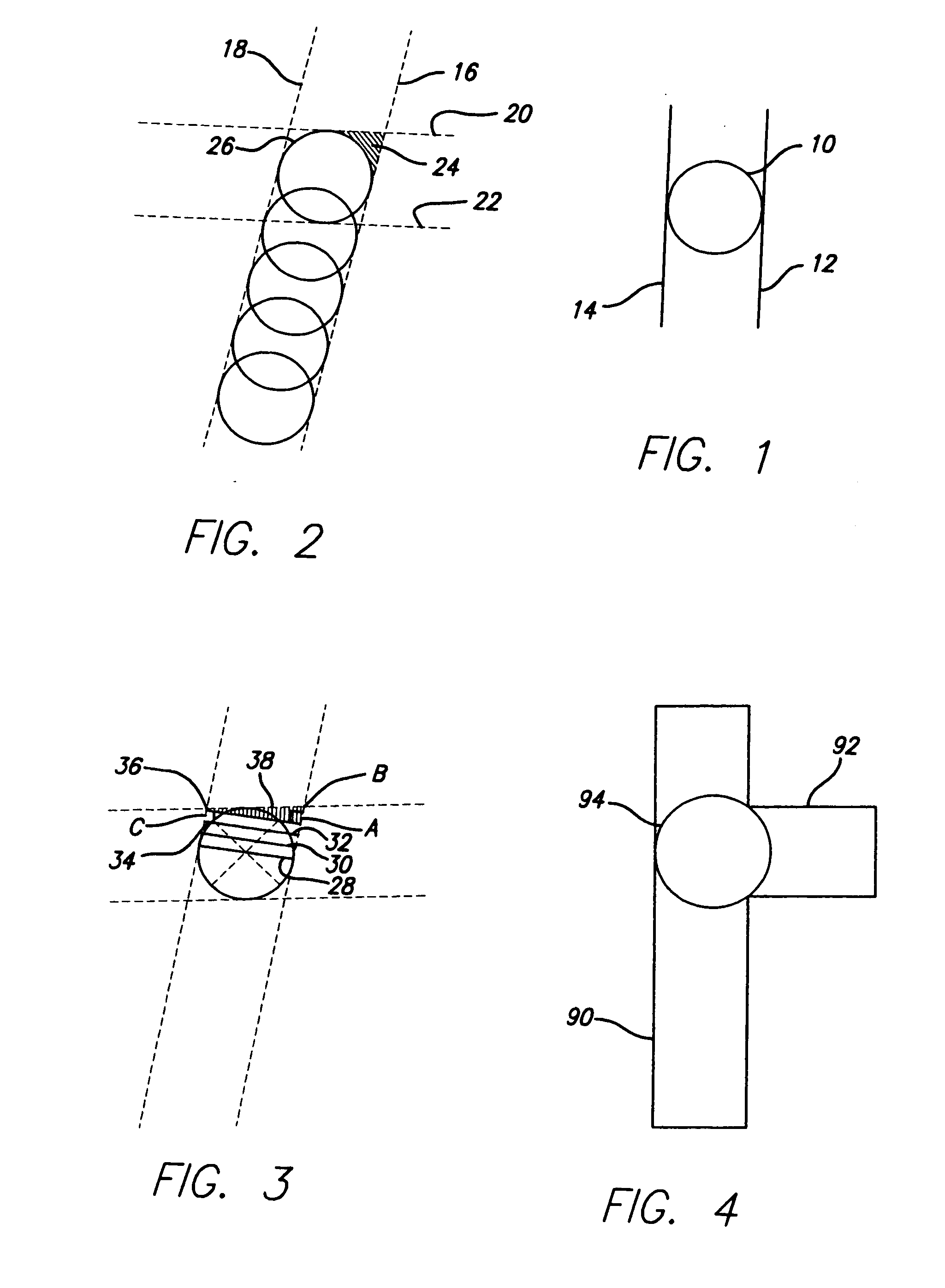Visual acuity testing
a visual acuity and testing technology, applied in the field of eye charts, can solve the problems of limited uniformity, variability of optotype recognition difficulty, and difficulty for patients to distinguish between the letters
- Summary
- Abstract
- Description
- Claims
- Application Information
AI Technical Summary
Problems solved by technology
Method used
Image
Examples
Embodiment Construction
[0016] The present invention provides optotypes which can be used in an eye chart with resolution differences typically less than 1% between differing letters as opposed to the large resolution angle variation that occurs on many eye charts currently in use and disclosed in the prior art. These optotypes have been designed by standardizing the maximum resolution angle any one letter may have. To accomplish this very small resolution difference, the present invention utilizes a design circle which represents the maximum resolution any one letter in the eye chart may have.
[0017] By referring now more particularly to FIG. 1, the design circle 10 is illustrated within a pair of lines 12 and 14 which are illustrative of the boundaries of a portion of a letter which may be utilized within an eye chart. In designing the optotypes for use in the eye chart, a critical limitation is that no one letter would have any portion thereof which exceeds the area of the design circle 10. If the desig...
PUM
 Login to View More
Login to View More Abstract
Description
Claims
Application Information
 Login to View More
Login to View More - R&D
- Intellectual Property
- Life Sciences
- Materials
- Tech Scout
- Unparalleled Data Quality
- Higher Quality Content
- 60% Fewer Hallucinations
Browse by: Latest US Patents, China's latest patents, Technical Efficacy Thesaurus, Application Domain, Technology Topic, Popular Technical Reports.
© 2025 PatSnap. All rights reserved.Legal|Privacy policy|Modern Slavery Act Transparency Statement|Sitemap|About US| Contact US: help@patsnap.com



